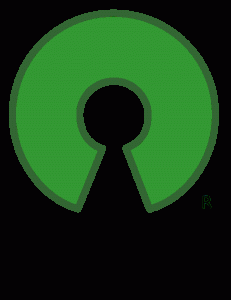Software is everywhere around us – we need it for our phones, our laptops, we even need it when we want to bet online with 22bet. People feel like they can share software with others, simply by letting them have an application that they have installed. In the case of applications that are not encrypted to work with a single machine or account, this is possible. It is also illegal.
This inability to redistribute software has bugged people for a long time, particularly when normal and useful software became widespread, but for a price which most people couldn’t pay, or rather, did not want to pay.
In comes open source, an alternative to freemium and closed software. But, what exactly is open source software? Let us take a closer look.
The Beginnings of Open Source

The open-source movement began with Richard Stallman and his GNU operating system in 1983. Stallman also founded the Free Software Foundation, which wants software to be free to be studied, worked on, and redistributed. This was a very strong idea, but one which was unappealing to businesses. In 1997, Eric Raymond published a study, The Cathedral, and the Bazaar, one which reflects on hackers and free software.
This paper caught the eye of the Netscape Communications Corporation and they released the source code for their browser, which would later be known as Firefox.
The Open Source Initiative
Free software had a very strange and business-unfriendly meaning behind it, which is why the term had to be reimagined and the definitions adapted to make room for more while also enabling companies to make a living.

The Open Source Initiative was founded in 1998, defining open-source software as computer software released under a license that allows users to see, modify, and redistribute the source code as they see fit. It was met with some resistance, from large corporations, of course, Microsoft being among the first to oppose it. However, with time, open-source gained traction and backing from most large companies, everyone contributing to some software, whether browsers, AI, search engines, kernels, drivers, and so on and so forth.
What Open Source Means for the User
For the user, open-source means free software that they can download and share as they see fit. For the more tech-savvy users, it means that they can take a look under the hood to see how the software operates and whether there are any gremlins causing problems.
Open-source software is typically safer than closed source because you and everybody else can look at what the code is and what it does. The collaborative nature of open source means that every user can contribute if they have the know-how and the time.
The Future of Software?

Open source could be the future of software, but given how many companies are releasing applications that are seemingly free, the average user might not know the difference between “free” and open source. Social media is free, but you pay for it with your information and privacy.
Open-source software will be here in a decade, or even a century, but it will unlikely be the most distributed type of software, nor the most used.
Even so, it is good to know that there is an alternative to software built by large companies which mostly care about profit.
